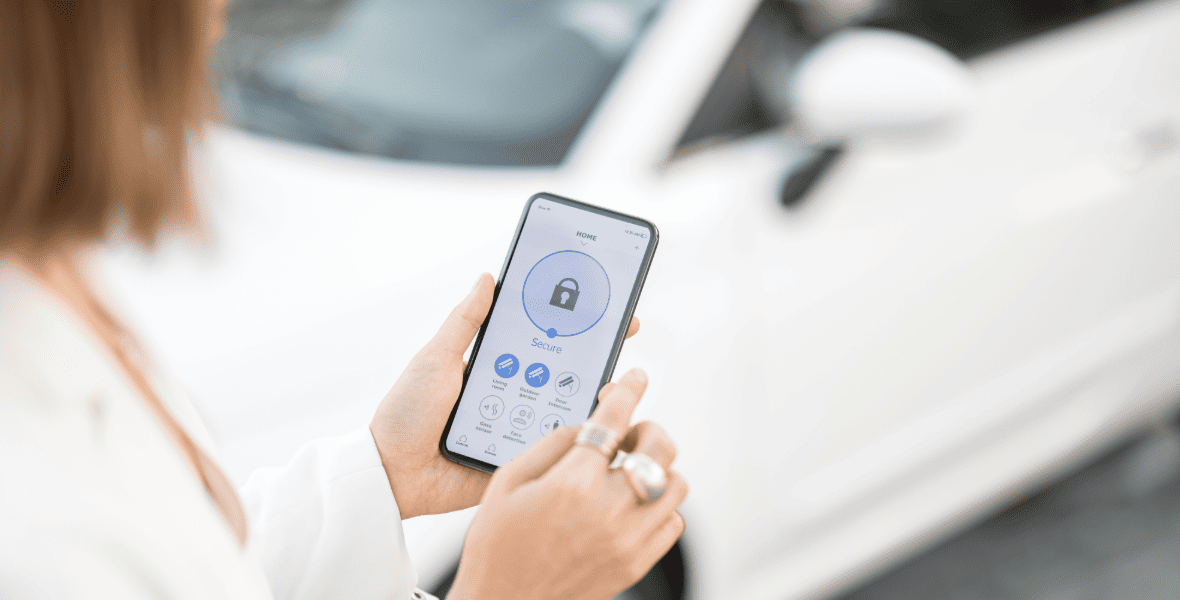Table of Contents:
- Why eSIMs are harder to steal or tamper with
- How eSIMs prevent SIM swapping and cloning
- Can eSIMs be hacked or phished?
- How eSIMs handle authentication and identity verification
- Are travel eSIMs safe for international use?
- What happens if a phone with an eSIM is stolen?
- Best practices for securing your eSIM
An eSIM (embedded SIM) is a digital SIM card embedded directly into devices like smartphones, tablets, or wearables. It allows users to activate mobile plans without needing a physical SIM card.
The emergence of digital SIM technology has ignited conversations about the safety and security of eSIMs. Unlike their traditional counterparts, eSIMs minimize the risk of physical theft or tampering. This inherent design boosts data protection and enhances user privacy because eSIMs cannot be easily removed or exchanged.
Nevertheless, vulnerabilities persist. Cyber threats such as SIM swapping attacks, phishing scams, and hacking attempts continue to pose potential dangers. Additionally, online security issues stem from apps used to manage eSIM profiles; these could expose users to tracking or data breaches.
Why eSIMs are harder to steal or tamper with
eSIMs boost security by being integrated directly into a device's hardware, as seen in popular devices like Apple's iPhone series or Samsung Galaxy smartphones.
They also include a secure element—a specialized hardware component that safeguards sensitive data from unauthorized access. This secure storage significantly reduces the risk of theft and cloning, as it prevents unauthorized duplication or extraction of authentication credentials.
Hacking an eSIM requires complete access to the entire device, which makes unauthorized modifications far more challenging than conventional SIM cards. Since there's no removable chip involved, attackers can't simply swap or duplicate it for fraudulent purposes.
How eSIMs prevent SIM swapping and cloning

eSIMs significantly lower the risk of SIM swapping and cloning because they don't rely on a physical card. In traditional setups, SIM cloning involves duplicating unique identifiers from a tangible SIM, but eSIMs store credentials securely within the device's hardware. This makes unauthorized duplication almost impossible.
The activation and management of eSIM profiles are governed by authentication protocols established by network operators. Since these profiles are provisioned remotely and require identity verification, it's challenging for fraudsters to transfer an eSIM to another device without authorization.
This secure element mentioned earlier also prevents malicious individuals from intercepting or altering authentication credentials, ensuring robust protection against SIM swapping and cloning attacks.
While identity theft attacks such as SIM swapping can still occur if an attacker circumvents carrier security measures, regulatory compliance enforces strict verification processes to mitigate this risk. Multi-factor authentication further enhances protection against fraudulent account transfers.
Can eSIMs be hacked or phished?
eSIMs provide enhanced security compared to traditional SIM cards; however, they aren't entirely immune to hacking attempts targeting carrier systems. Cybercriminals may seek out vulnerabilities within carrier systems or employ deceptive tactics to gain unauthorized access. Unlike their physical counterparts, eSIM profiles are managed digitally by network operators, making direct cloning significantly more challenging.
Phishing remains a significant concern, as attackers might trick users into revealing login credentials to manipulate carrier accounts and configure an eSIM on another device.
To mitigate these risks, it is essential to employ robust cybersecurity practices such as:
- enabling two-factor authentication (2FA), ideally using authenticator apps rather than SMS verification;
- creating unique and strong passwords for your carrier accounts;
- steering clear of suspicious links and phishing attempts
Most threats related to eSIMs stem from account security issues rather than the technology itself; thus, maintaining stringent online security habits is crucial in preventing unauthorized access.
How eSIMs handle authentication and identity verification

eSIMs employ robust authentication techniques to verify user identity before they're activated. When setting up, users are required to submit personal information, such as government identification or account credentials. The network provider then checks this data to ensure that only those with proper authorization gain access to mobile services.
Adhering to GSMA regulations and security standards is vital for ensuring eSIM safety. Many areas enforce stringent rules, including GDPR in Europe and CCPA in California. These laws obligate mobile operators to safeguard user information, prevent unauthorized access, and securely manage identity verifications.
GSMA standards outline security protocols for eSIMs that align with global industry requirements. Remote SIM provisioning leverages encryption and distinct digital certificates, making it challenging for intruders to intercept or manipulate the data.
Adding an extra layer of protection, multi-factor authentication (MFA) demands additional verification steps such as authenticator apps, biometric screenings, or hardware tokens. While SMS codes are common, they are less secure due to vulnerabilities like SIM swapping. This significantly reduces the risk of fraudulent activations and unauthorized profile transfers.
Are travel eSIMs safe for international use?

Travel eSIMs offer a level of security comparable to regular eSIMs for international journeys. Built into your device, they eliminate the risk of being physically stolen or swapped like traditional SIM cards, reducing potential theft and unauthorized access. security provided by network operators is crucial for safety, so selecting a reputable provider is essential.
Acquiring a travel eSIM typically involves identity verification, similar to purchasing a physical SIM card. This step enhances user privacy and compliance with regional regulations.
The eSIM technology enables remote provisioning, allowing users to switch networks securely without handling physical cards. Nevertheless, travelers should exercise caution by enabling robust authentication methods and opting for trusted carriers. These precautions help guard against cybersecurity threats such as phishing or fraudulent account transfers.
You can further enhance safety when using an eSIM overseas by:
- choosing a mobile carrier that utilizes strong encryption protocols;
- using secure authentication methods such as multi-factor authentication;
- avoiding suspicious links and phishing attempts.
What happens if a phone with an eSIM is stolen?

When a phone equipped with an eSIM is stolen, the thief cannot physically remove or transfer the SIM to another device, making it more challenging for them to exploit the associated mobile network. Taking swift action is essential to prevent unauthorized access.
Your first step should be contacting your network provider to report the theft. Many carriers provide options for:
- suspending service remotely,
- deactivating the eSIM profile,
- wiping data from the phone if it’s linked to security features like Apple's Find My iPhone or Google's Find My Device.
Activating an eSIM on a different device requires authentication and identity verification, preventing anyone from easily transferring it. However, if criminals manage to reset and bypass security on the stolen device, they could attempt fraud using any stored information. Employing robust authentication methods such as biometric locks and multi-factor authentication offers additional protection against these threats.
Remote provisioning facilitates safe transfers of mobile plans when changing devices by ensuring that only authorized users can activate or transfer an eSIM profile. Implementing extra security measures like remote wiping and updating account passwords further reduces potential risks after a theft.
Best practices for securing your eSIM
Securing an eSIM requires implementing strong authentication and taking proactive security measures. Utilizing biometric locks, such as fingerprint or facial recognition, provides additional protection against unauthorized access. It is crucial to use robust, unique passwords for your mobile carrier accounts. Two-factor authentication (2FA) is a valuable tool to further prevent any unwanted modifications to the eSIM.
Keeping your device's software updated is key. Regular updates ensure that security patches address vulnerabilities swiftly, minimizing exposure to potential threats. It's also wise to routinely review installed apps and their permissions to identify any risks associated with third-party applications managing eSIM profiles.
Be vigilant about phishing attempts; cybercriminals often use deceptive emails or messages in an effort to steal your login credentials. Avoid clicking on suspicious links and never share sensitive information with unverified sources.
In the event that your device is lost or stolen, promptly notify your network provider so they can suspend or deactivate the eSIM remotely. Many carriers offer features like Apple's Find My iPhone or Google's Find My Device for remote data wiping capabilities.
Opt for a reputable carrier committed to stringent regulatory standards for data protection and secure remote provisioning of eSIMs. By following these steps, you can enhance online security and mitigate risks associated with digital SIM technology.
Posts you might also like




